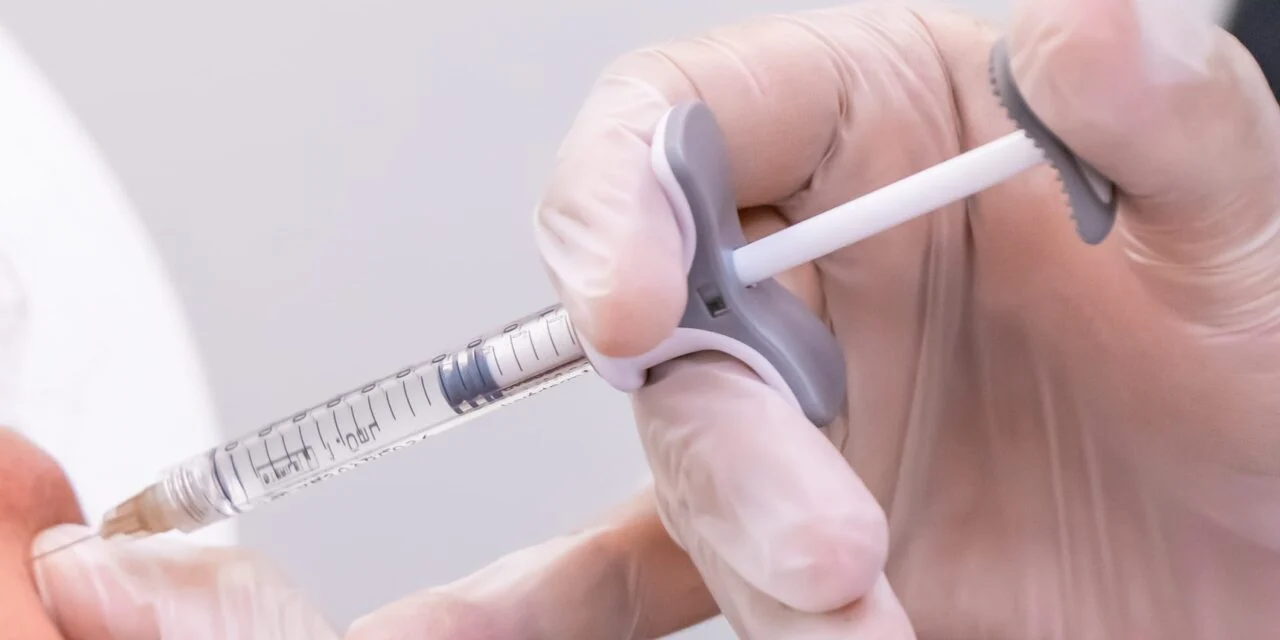A new report reveals shifting forces behind the rising use of hyaluronic acid fillers worldwide.
A new report shows that the global hyaluronic acid filler market is expected to grow steadily over the next several years, rising from $3.96 billion in 2024 to $5.44 billion by 2031. While the report points to clear momentum in the category, it also notes that a combination of factors—both supportive and limiting—will influence how that growth unfolds.
What’s Powering the Momentum
Rising Demand for Non-Surgical Aesthetic Procedures
The increasing global preference for non-surgical and minimally invasive cosmetic treatments is significantly driving the growth of the hyaluronic acid-based dermal fillers market, according to the report. Consumers today are seeking safer, faster, and more affordable alternatives to surgical interventions, and “hyaluronic acid fillers offer a natural look, reversible effects, and minimal downtime, making them a highly attractive option for both men and women,” according to the report
- The surge in awareness about facial aesthetics and the influence of social media have amplified consumer interest in appearance enhancement.
- Clinics, dermatology centers, and med spas are increasingly adopting advanced filler technologies to meet growing patient demand.
- The convenience and affordability of outpatient aesthetic procedures are creating lucrative growth opportunities for market players.
- Manufacturers are leveraging this demand by expanding product portfolios, launching innovative filler lines, and collaborating with healthcare professionals to enhance brand trust.
- This rising preference for minimally invasive beauty solutions is expected to sustain long-term market growth and drive significant revenue generation for key industry stakeholders.
Advancements in Filler Formulation and Technology
Continuous innovation in filler materials, cross-linking technology, and injection techniques is changing the landscape of the hyaluronic acid-based dermal fillers market, the report notes. Manufacturers are focusing on developing products that provide enhanced elasticity, longer-lasting results, and superior patient comfort.
- Modern fillers incorporate advanced cross-linking agents that improve product stability and reduce degradation time.
- The use of AI-assisted facial mapping tools and precision delivery systems has optimized the accuracy and personalization of filler applications.
- Medical professionals now have access to formulations tailored for specific facial areas, such as lips, cheeks, and nasolabial folds, ensuring natural results.
- Companies are investing in research and development to create biodegradable, skin-safe solutions that align with evolving safety standards.
- These technological innovations not only improve treatment outcomes but also strengthen patient satisfaction and brand loyalty. As technology advances, filler manufacturers can capitalize on the growing trend toward safe, efficient, and personalized aesthetic enhancements.
Expanding Geriatric Population and Increasing Focus on Anti-Aging Treatments
The aging global population is a key catalyst behind the growing demand for hyaluronic acid-based dermal fillers, according to the report. As individuals strive to maintain youthful appearances and combat age-related volume loss, dermal fillers have become an integral part of aesthetic medicine.
- Adults aged 35 and above are increasingly opting for cosmetic enhancements to address wrinkles, fine lines, and sagging skin.
- The rise in disposable income and greater societal acceptance of aesthetic procedures are supporting market expansion.
- Emerging economies such as China, India, and Brazil are witnessing a surge in cosmetic clinic establishments catering to the aging demographic.
- The trend toward preventive aesthetics—where individuals seek early treatments to slow visible aging—further fuels market adoption.
- The convergence of aging demographics and rising beauty consciousness creates a favorable environment for manufacturers and service providers. By targeting older yet image-conscious consumers, companies can tap into a stable and expanding revenue stream.
Challenges Shaping the Pace
High Treatment Costs and Limited Reimbursement Policies
The relatively high cost of hyaluronic acid-based dermal filler procedures remains a significant barrier to market growth, according to the report. Despite increasing consumer awareness, affordability challenges persist, especially in developing regions.
- Most aesthetic procedures are considered elective and are not covered by insurance, limiting accessibility to premium consumers.
- The need for periodic maintenance treatments every 6–12 months adds to the overall expenditure for patients.
- High material costs, clinical fees, and practitioner expertise further elevate the total treatment price.
- Economic disparities across markets make affordability a key challenge for manufacturers targeting emerging economies.
- To overcome this restraint, companies must adopt value-based pricing, invest in cost-effective production methods, and explore partnerships with clinics to introduce flexible payment options. Addressing cost concerns will be vital for capturing a broader customer base and improving market penetration.
Regulatory Challenges and Product Approval Delays
The hyaluronic acid filler industry operates under stringent regulatory frameworks that vary by region, creating multiple challenges for manufacturers, according to the report. Delays in obtaining product approvals can significantly hinder time-to-market and restrict innovation.
- Regulatory bodies such as the FDA, EMA, and PMDA enforce strict quality, safety, and efficacy standards for dermal filler products.
- Complex documentation, clinical trials, and product testing requirements increase operational timelines and expenses.
- Frequent policy updates and regional variations complicate international expansion strategies.
- Companies face hurdles in ensuring compliance across multiple jurisdictions, affecting profitability and scalability.
- Manufacturers must prioritize strong regulatory intelligence, proactive documentation management, and collaboration with local authorities. Streamlining compliance processes will be critical to maintaining competitiveness and ensuring consistent global product launches.
Adverse Effects and Lack of Skilled Professionals
While hyaluronic acid fillers are generally regarded as safe, the risk of side effects and procedural complications continues to restrict market adoption in certain regions, according to the report. Furthermore, the shortage of trained professionals capable of performing advanced filler techniques limits overall growth potential.
- Common side effects such as bruising, swelling, or vascular occlusion can deter potential clients from opting for treatments.
- Untrained or inexperienced practitioners increase the likelihood of poor outcomes and negative patient experiences.
- The lack of standardized training programs across regions impacts procedural consistency and patient safety.
- Negative media coverage or patient dissatisfaction can affect the credibility of filler brands and service providers.
- To mitigate these issues, industry leaders are investing in practitioner training workshops, certification programs, and patient education initiatives. By prioritizing skill development and safety awareness, stakeholders can enhance consumer trust and drive responsible market growth.
ID 162896675 © Joycegraceweb | Dreamstime.com




